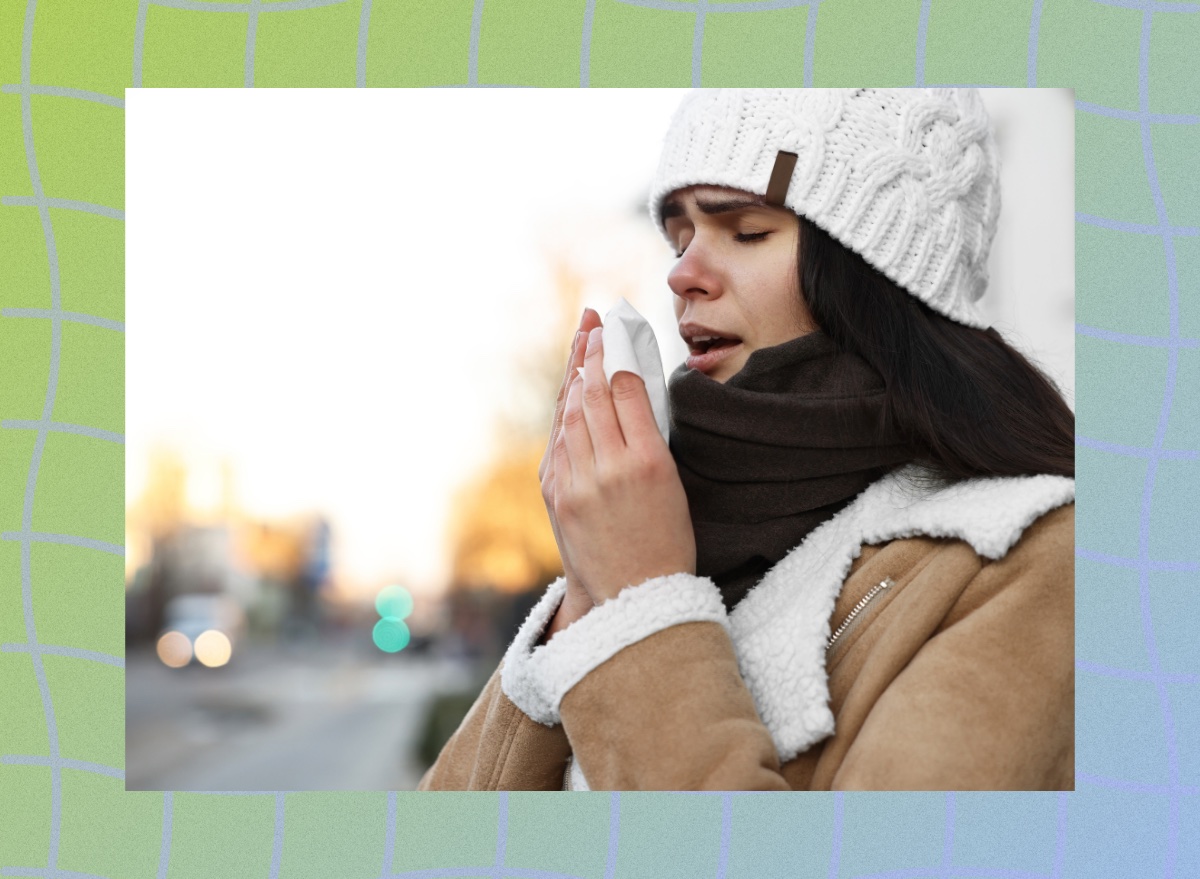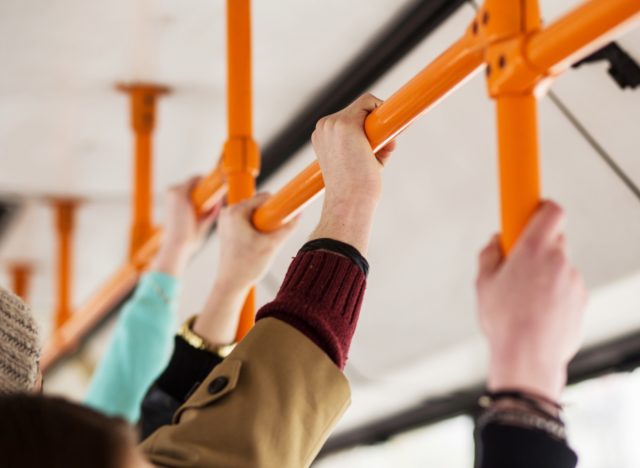10 Places You're Most Likely to Catch the Flu, According to a Doctor

With winter lurking around the corner comes the looming threat of the dreaded flu season. According to the National Institutes of Health (NIH), the seasonal influenza virus (or the flu) hospitalizes approximately 200,000 people and kills over 36,000 people annually in the U.S. alone. Common flu symptoms include fever, coughing, fatigue, chills, and muscle aches, and complications can lead to life-threatening conditions like pneumonia. These alarming stats likely have you wondering about the most common places you'll likely catch the flu, and we're here to share exactly that.
While past flu seasons and the COVID-19 pandemic have taught us how to remain healthy and be extra hygienic, like wearing masks, diligently washing hands, and social distancing, there are still many places where your odds of contracting this potentially deadly virus are significantly higher than others.
We spoke with Laura Purdy, MD, MBA, a board-certified family physician in Fort Benning, Georgia, who tells us, "The places you're most likely to catch the flu are high-traffic areas with lots of people in an area daily. Indirect transmissions, like touching the same surfaces as someone infected, are most likely how you would pick up the virus. The flu season is an important time to ensure you're washing your hands properly because you cannot count on these public surfaces being cleaned after every person."
If you want to stay healthy this upcoming flu season, keep reading to uncover the 10 places you're most likely to get the flu, according to Purdy.
Airplanes and Airports

While jetting off to new destinations is exciting, airports and airplanes can be breeding grounds for the flu virus. The confined spaces, recycled air, and proximity to fellow travelers increase your risk of exposure.
"High turnover of travelers over a given day increases the chances of exposure since you're seeing so many people from so many places," says Purdy. "You're also in confined places, which puts you in close contact with those who have the flu."
Practicing good hand hygiene, wearing masks, and avoiding touching your face can help minimize the chances of picking up the flu during your travels.
Schools and Daycares

Schools and daycares are notorious for circulating illnesses; the flu is no exception. The close quarters, shared supplies, and student interactions create an environment conducive to flu transmission.
"Kids all have shared toys, lots of group activities, and there are many germs going around in this age group," states Purdy.
Encouraging regular handwashing, promoting vaccination, and staying informed about flu outbreaks in the community are essential steps in protecting students and educators.
Public Transportation

Whether on buses, trains, or cabs, the crowded conditions and frequently touched surfaces increase your likelihood of catching the flu. "Close passenger contact and sitting in the same seats without them being cleaned between passengers significantly increases your flu risk," says Purdy.
Social distancing when possible and using hand sanitizers can help commuters reduce their risk of catching the flu.
Grocery and Drug Stores

Shared shopping carts and checkout counters are potential flu hotspots. "Most people still tend to go grocery shopping even when sick because they still need food, and they often have to run out to get meds," explains Purdy.
To help reduce your chances of getting the flu, regularly disinfect your hands, avoid touching your face while shopping, and use sanitizing wipes on cart handles.
Retail Stores and Shopping Malls

Shopping malls' high-touch surfaces and bustling atmosphere are breeding grounds for flu transmission. "Shopping centers are high-foot-traffic areas that are not cleaned after each person," says Purdy. "Lots of people visit them daily, so chances are you'll walk by or touch the same surface as someone who may be infected."
Restaurants and Coffee Shops

Enjoying a meal or a coffee break in public spaces means exposure to shared utensils, menus, and tables. Also, the social nature of dining out increases your risk of potential flu exposure.
"Often you're in close small indoor spaces at restaurants or coffee shops," Purdy tells us. "Additionally, you're using shared items like menus and condiments, so you may touch the surface of something with the virus on it."
To mitigate this risk, opt for outdoor seating, maintain hand hygiene before and after meals, and avoid shared condiments.
Offices and Places of Work

It's no secret that office spaces and shared workstations can be potential flu hotspots. "You're working closely and collaboratively with others at work, which means you're in close indoor spaces and often sharing spaces like meeting and break rooms," explains Purdy.
Cleaning shared surfaces regularly, offering remote work options when possible, and encouraging sick employees to stay home are crucial for creating a flu-resistant workplace.
Hospitals and Care Facilities

The constant influx of patients, shared medical equipment, and close interactions among doctors and nurses significantly increase the risk of contracting the flu virus. Purdy points out, "Because of the amount of sick people around you, you're more likely to be exposed to the flu at hospitals and care facilities."
Frequent handwashing and vaccinations are essential measures for both healthcare workers and visitors.
Gyms and Workout Classes

While fitness centers and group exercise classes promote healthy lifestyles, they can also expose you to the flu. Shared gym equipment and close proximity during classes create an environment where the flu virus can quickly spread.
"You're often touching lots of shared surfaces in crowded gyms. Also, you're often inside, and germs can spread with little airflow," explains Purdy.
Wiping down equipment before and after use and choosing less crowded workout times can help you maintain your fitness routine without putting your health at risk.
Concerts or Sporting Events

Crowded concerts and sporting events can be exhilarating, but the close quarters and shared facilities may spike your flu risk. "Because of the large number of people in one given space at one given time, concerts and sporting events are high-risk flu places," Purdy notes.
The next time you attend one, consider wearing a mask, practicing excellent hygiene, and selecting seats that allow social distancing to slash your odds of getting the flu.









